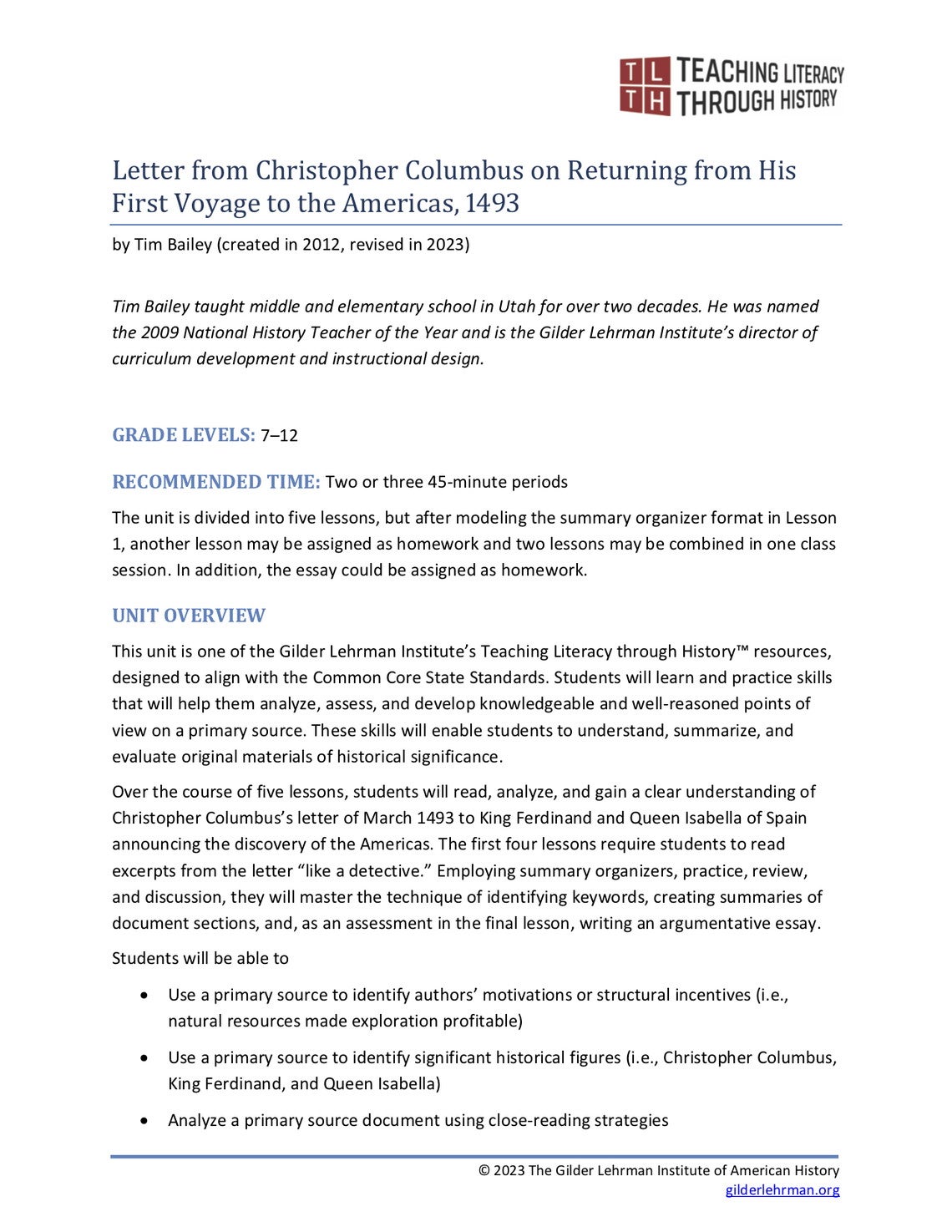Lesson by Tim Bailey
Essay by Kathleen DuVal, University of North Carolina at Chapel Hill
Grade Level: 7–12
Number of Class Periods: 2 or 3
Primary Era: The Americas to 1620

Over the course of five lessons, students will read, analyze, and gain a clear understanding of Christopher Columbus’s letter of March 1493 to King Ferdinand and Queen Isabella of Spain announcing the discovery of the Americas. The first four lessons require students to read excerpts from the letter “like a detective.” Employing summary organizers, practice, review, and discussion, they will master the technique of identifying keywords, creating summaries of document sections, and, as an assessment in the final lesson, writing an argumentative essay.
Lesson Plan Authors: Tim Bailey
Historical Background Essay by: Kathleen DuVal, University of North Carolina at Chapel Hill
CCSS.ELA-Literacy.RH.9-10.1: Cite specific textual evidence to support analysis of primary and secondary sources, attending to such features as the date and origin of the information.
CCSS.ELA-Literacy.RH.9-10.2: Determine the central ideas or information of a primary or secondary source; provide an accurate summary of how key events or ideas develop over the course of the text.
CCSS.ELA-Literacy.RH.9-10.4: Determine the meaning of words and phrases as they are used in a text, including vocabulary describing political, social, or economic aspects of history/social science.
CCSS.ELA-Literacy.SL.8.1: Engage effectively in a range of collaborative discussions (one-on-one, in groups, and teacher-led) with diverse partners on topics, texts, and issues, building on others’ ideas and expressing their own clearly.
CCSS.ELA-Literacy.W.8.1: Write arguments to support claims with clear reasons and relevant evidence.
How did Christopher Columbus describe who and what he found in the Caribbean?
What did Columbus suggest were the Caribbean’s most notable attributes?
How did Columbus’s expedition impact the Native peoples of the Caribbean?
Christopher Columbus’s Letter to King Ferdinand and Queen Isabella, 1493
Excerpts from Select Letters of Christopher Columbus with Other Original Documents Relating to His Four Voyages to the New World, translated and edited by R. H. Major, 1847, 1-17